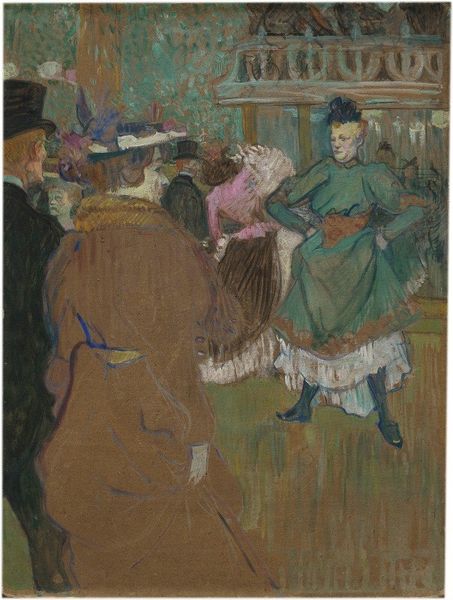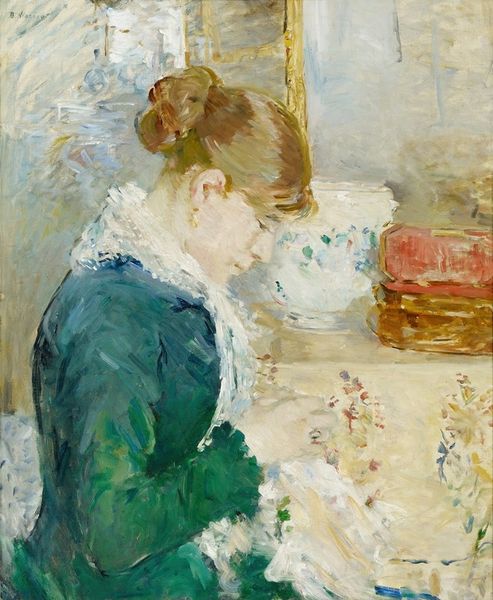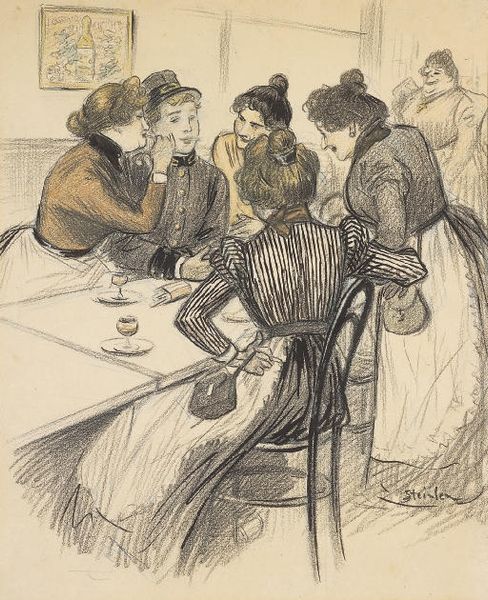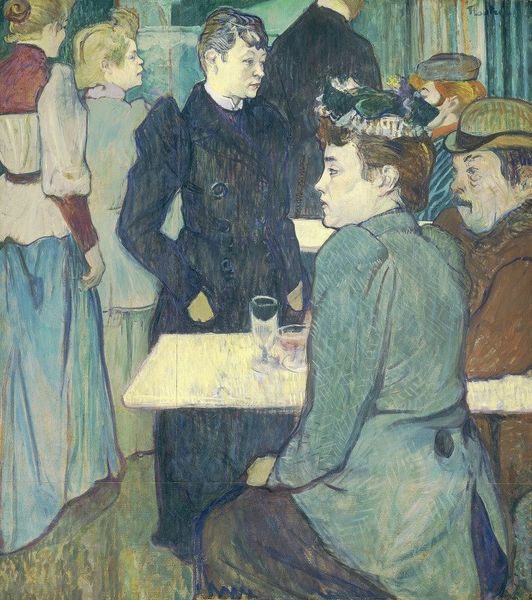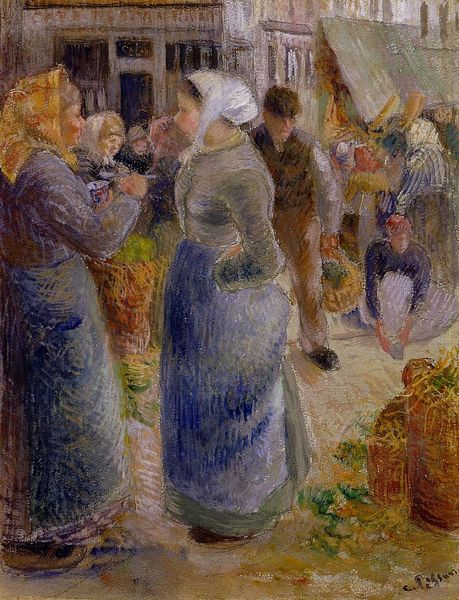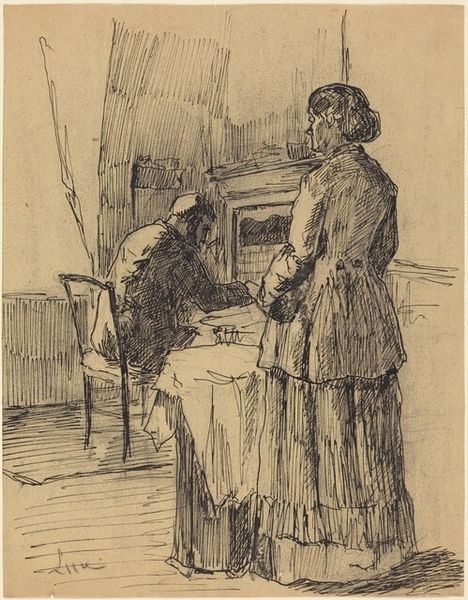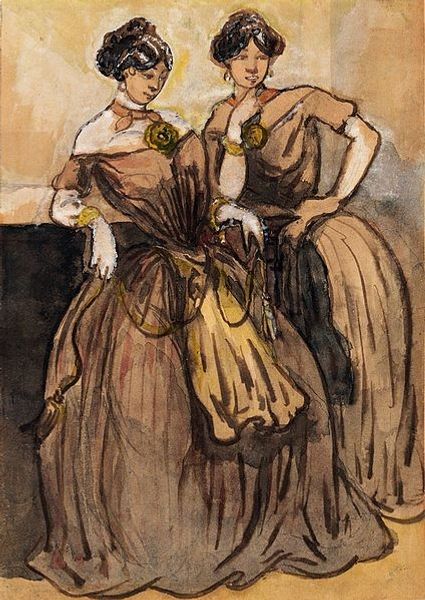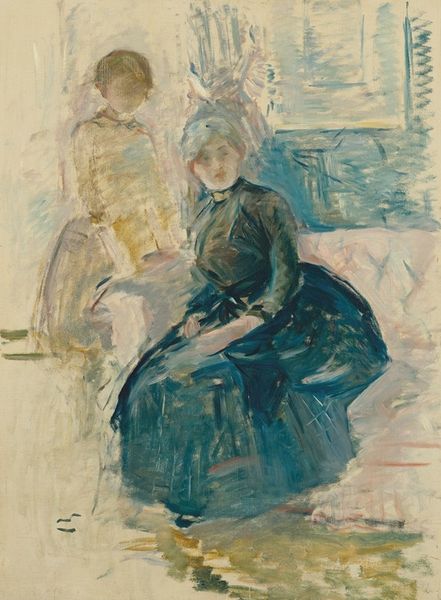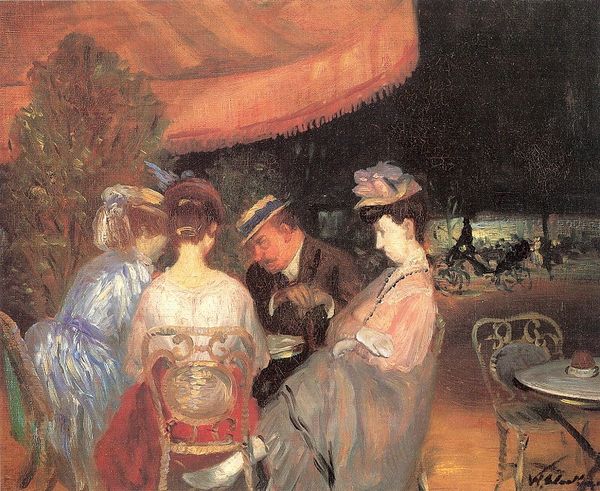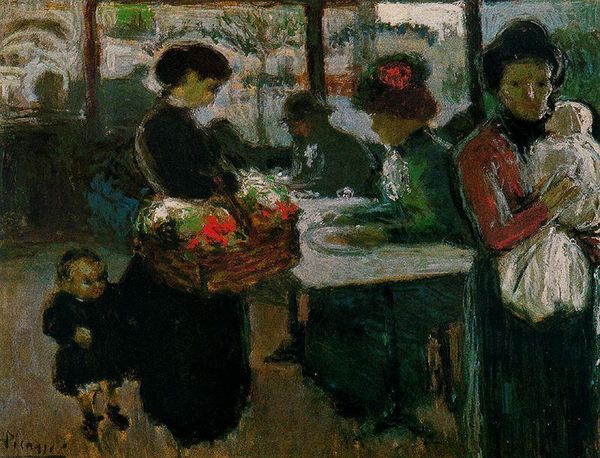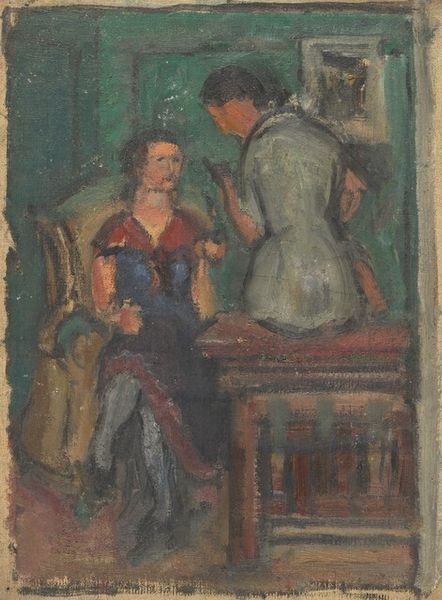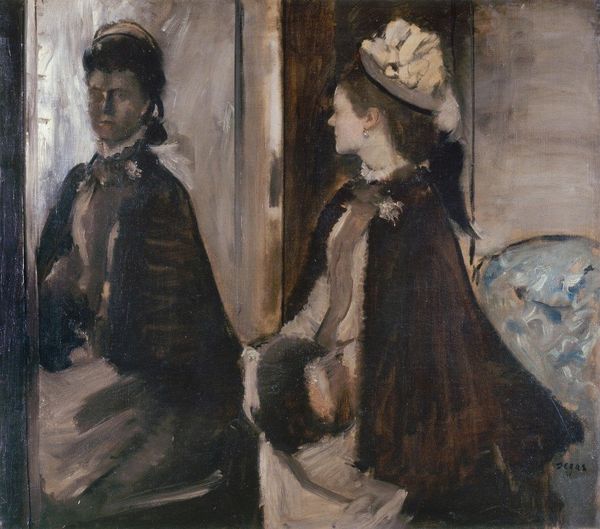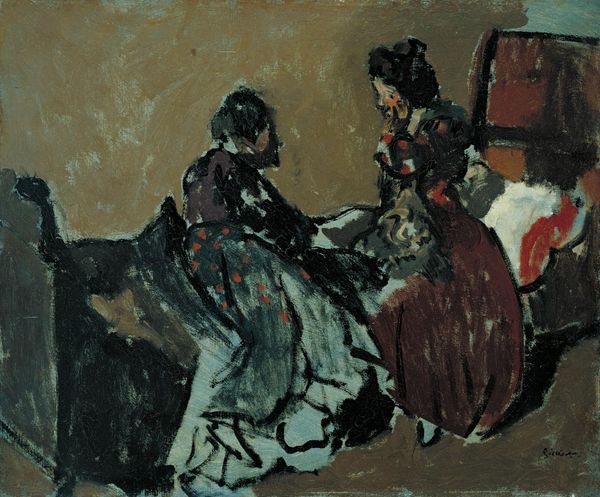
painting, watercolor
#
portrait
#
painting
#
impressionism
#
landscape
#
watercolor
#
cityscape
#
genre-painting
#
post-impressionism
#
watercolor
Dimensions: 62 x 46 cm
Copyright: Public domain
Editor: So, here we have Camille Pissarro’s "Market at Pontoise," created in 1882 using watercolor. It feels like a fleeting snapshot of daily life. What strikes you about it? Curator: Immediately, I’m drawn to the materiality. The use of watercolor is crucial. Consider its affordability and portability compared to oil paints. How does that influence who could depict scenes like this and who might consume such images? It's about the democratization of art production. Editor: That’s an interesting point! I hadn’t thought about watercolor as being linked to democratization. Curator: And think about the subject: a market scene, everyday labor. It's not a grand historical painting for the elite. Pissarro is focusing on the working class and the quotidian experience. This challenges the hierarchy of subject matter prevalent in academic painting at the time. What do you make of their clothing? Editor: Their garments look utilitarian and practical. Is Pissarro emphasizing the clothing to convey their socioeconomic status? Curator: Precisely! Their clothing reveals the reality of their labor. It's about highlighting the material conditions of their existence and consumption. And notice the sketch-like quality, the rapid brushstrokes. The labor appears swift but precise. There is intention and purpose, suggesting the artist considered the final product thoughtfully. Do you agree that there might be significance in how and why it’s made this way? Editor: Definitely! It is so interesting to think of how something so apparently casual, created through more affordable materials, can actually offer a profound commentary on social hierarchies and labor! Curator: Yes, this materiality and mode of representation can offer so many subtle points of discussion.
Comments
No comments
Be the first to comment and join the conversation on the ultimate creative platform.
